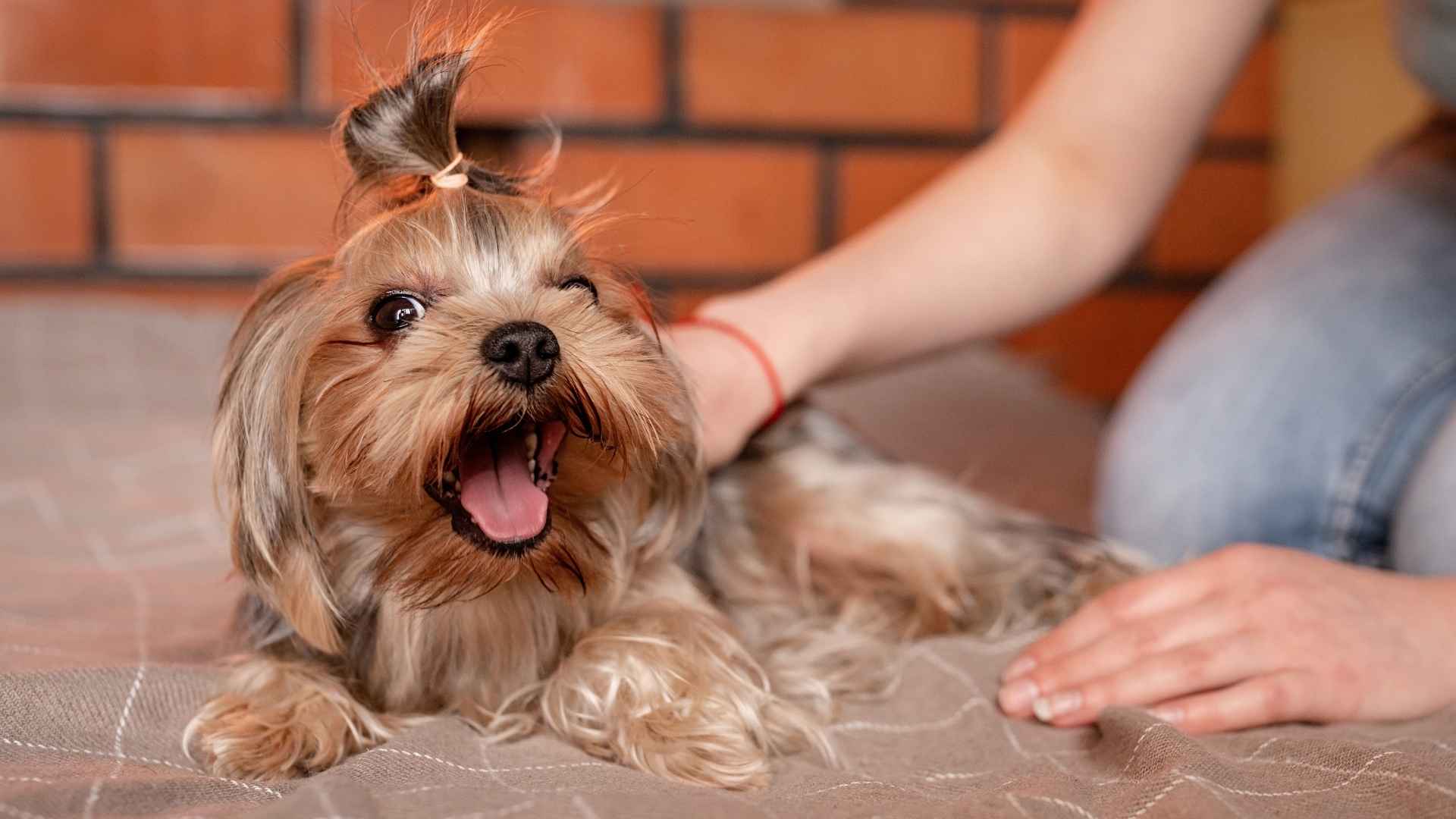When a dog is more than just a pet — when they’re a vital partner, helping navigate daily challenges — shedding can be a serious concern. Low shedding service dog breeds bring together the best of both worlds: unwavering support and minimal fur fallout.
For individuals relying on service dogs to assist with mobility, medical alerts, or emotional support, maintaining a clean environment is often essential, especially in sensitive spaces like hospitals, schools, or workplaces.
Low-shedding service dogs help reduce the burden on their handlers by being easier to maintain and less likely to trigger allergies, creating a more comfortable, accessible living space.
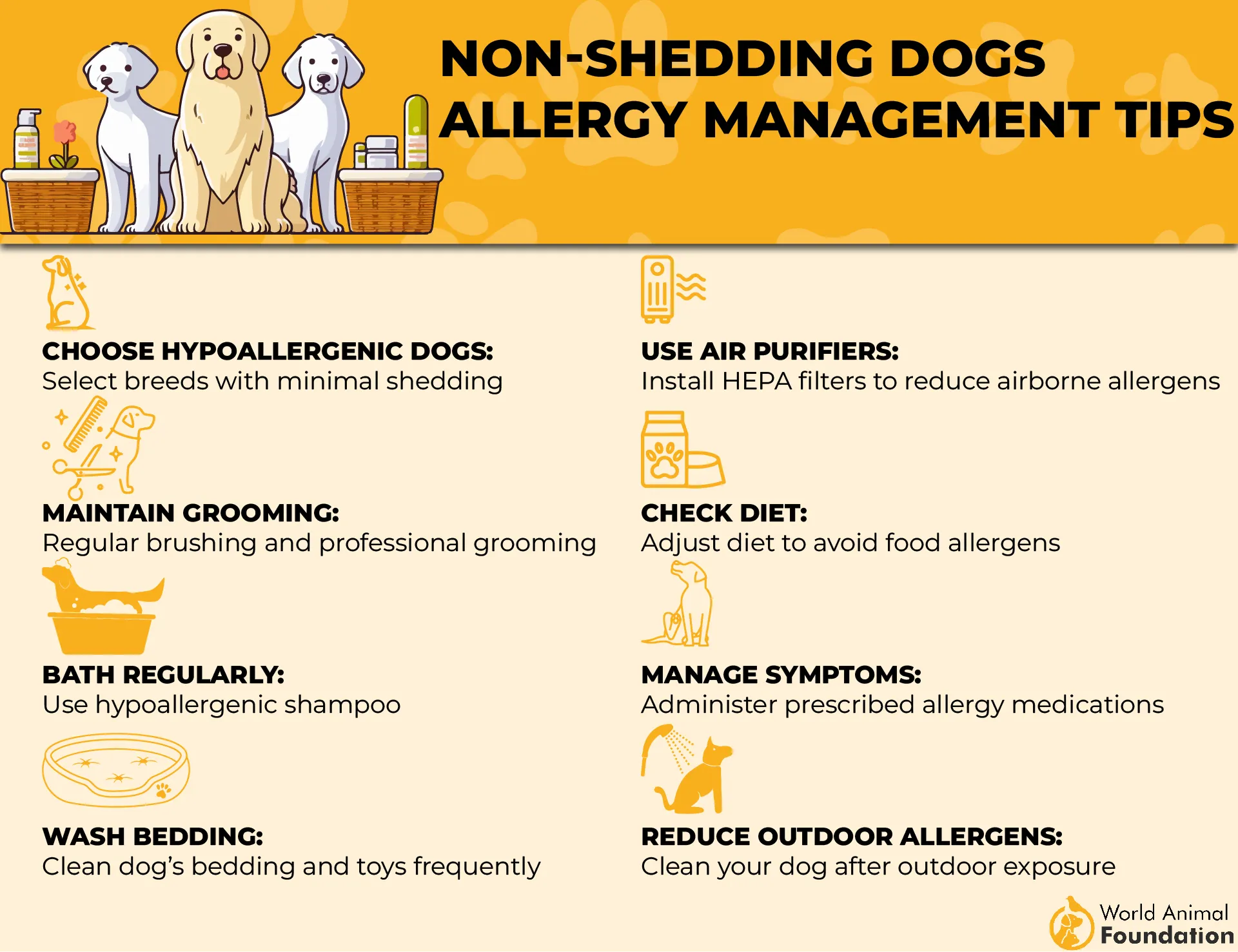
If you’re considering a service dog that is also hypoallergenic or simply want to know which breeds excel at combining functionality with cleanliness, join us in discovering the top low-shedding service dog breeds that work hard without leaving a trail.
Low-Shedding Service Dog Breeds
1. Poodle
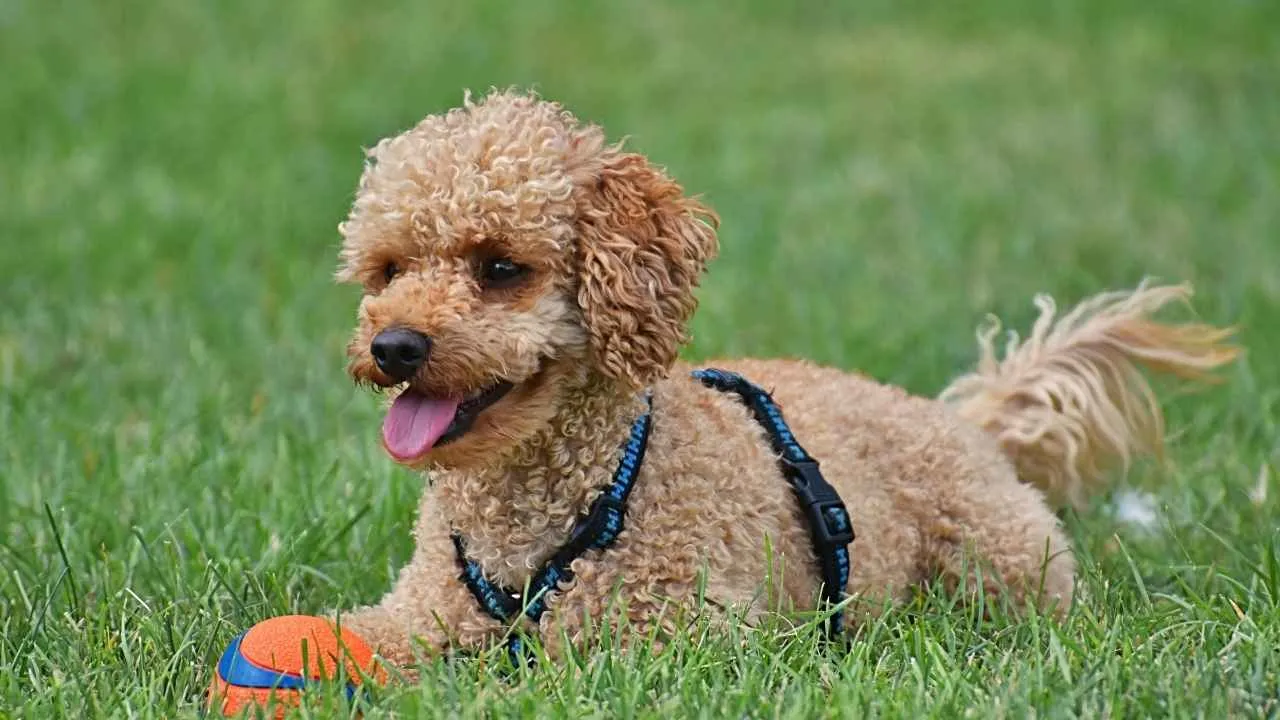
Shedding Level: Low. Hypoallergenic coat that barely sheds.
Service Dog Potential: Excellent! Works as a guide dog, therapy dog, seizure alert, diabetic alert, psychiatric support—you name it, the Poodle’s got it.
Poodles are like that one straight-A student in school who was also the star athlete, class president, and part-time magician. They’re wickedly smart, endlessly loyal, and—wait for it—hypoallergenic. Yes, you read that right.
Purina says that their curly coats shed very little, making the breed a suitable option for allergy sufferers. Their coat traps hair and dander instead of flinging it all over your black pants. They’re practically self-cleaning (okay, not really, but close).
These pups aren’t just beautiful with brains—they’re service dog superstars. Whether it’s guiding the visually impaired, detecting medical emergencies, or providing psychiatric support, Poodles adapt faster than your phone learns your latest slang.
A bonus? Poodles come in three sizes—Standard, Miniature, and Toy—so you can choose one that best suits your lifestyle and available space.
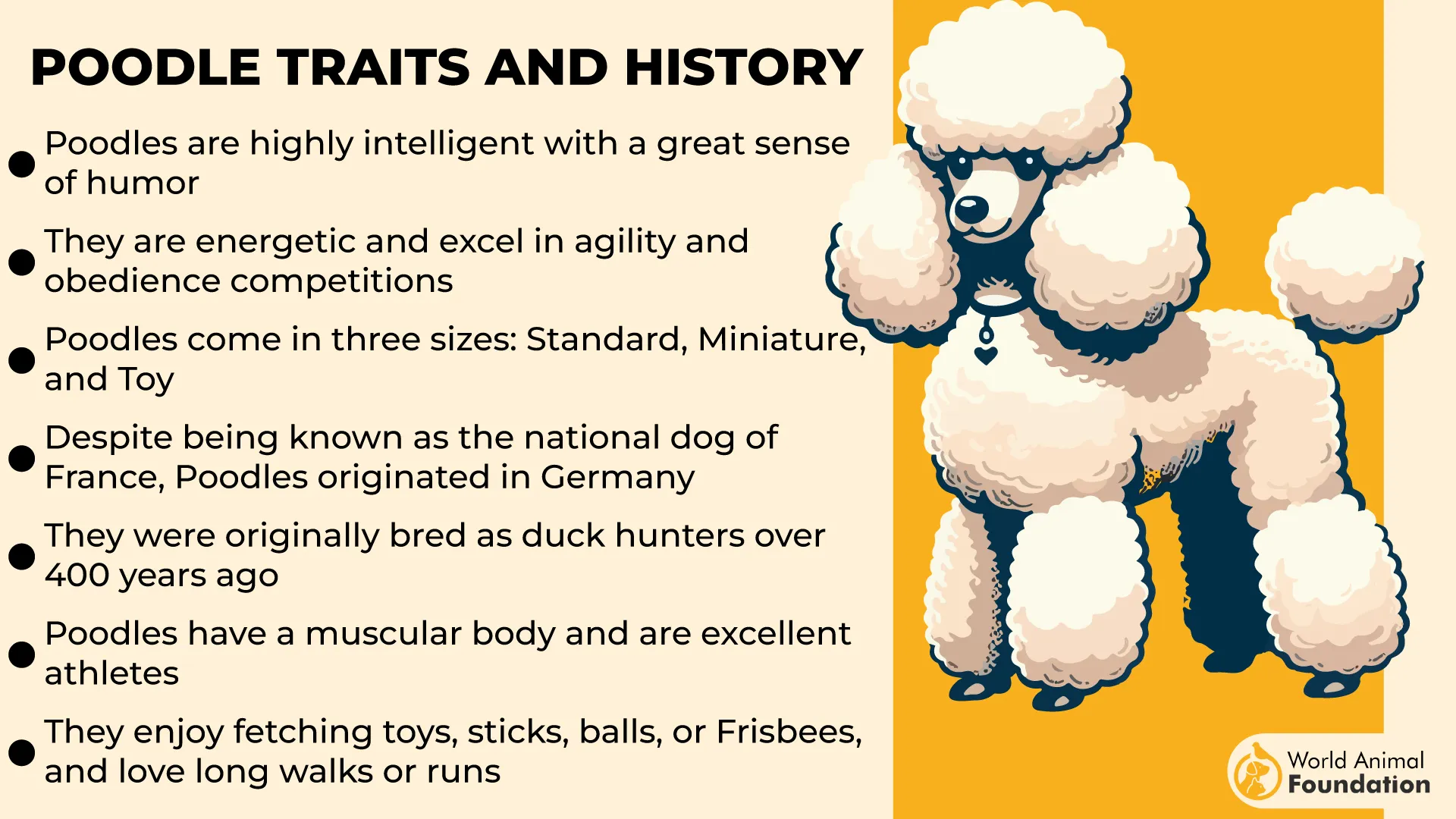
Fun Fact: Poodles were originally bred to retrieve things from water, so if you ever drop your keys in the pool… problem solved!
2. Yorkshire Terrier
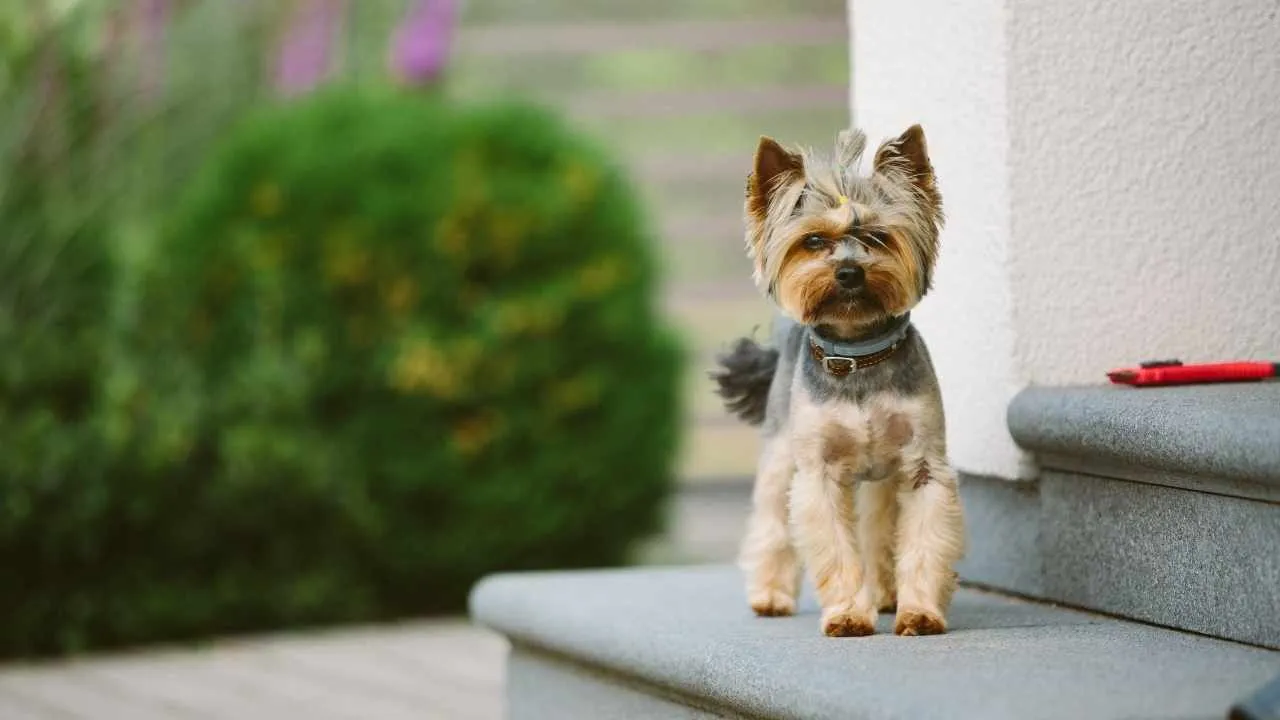
Shedding Level: Low. Their white silky coat barely sheds—but does need regular grooming unless you like the “rock star who overslept” look.
Service Dog Potential: Excellent service dogs ideal for emotional and psychiatric support, hearing alerts, and medication reminders. Not built for heavy lifting, but 10/10 would alert you to your Amazon delivery.
Yorkies are alert, highly intelligent, and have a highly affectionate nature. They bond closely with their families and often become particularly attached to one person.
Don’t let the topknot and tiny frame fool you—Yorkshire Terriers have the courage of a lion, the loyalty of a knight, and the bark of… well, a slightly irritated squeaky toy. But oh, are they determined!
That makes them fiercely devoted to their humans, which is great for service work (as long as you can train around the occasional stubborn streak).
While you won’t find a Yorkie pulling wheelchairs or opening doors, their compact size makes them ideal for flying, restaurant visits, and staying quietly under your desk while you work. Psychiatric service dog? Emotional support animal? Ringing bell notifier? Medication reminder? The Yorkie says, “Challenge accepted.”
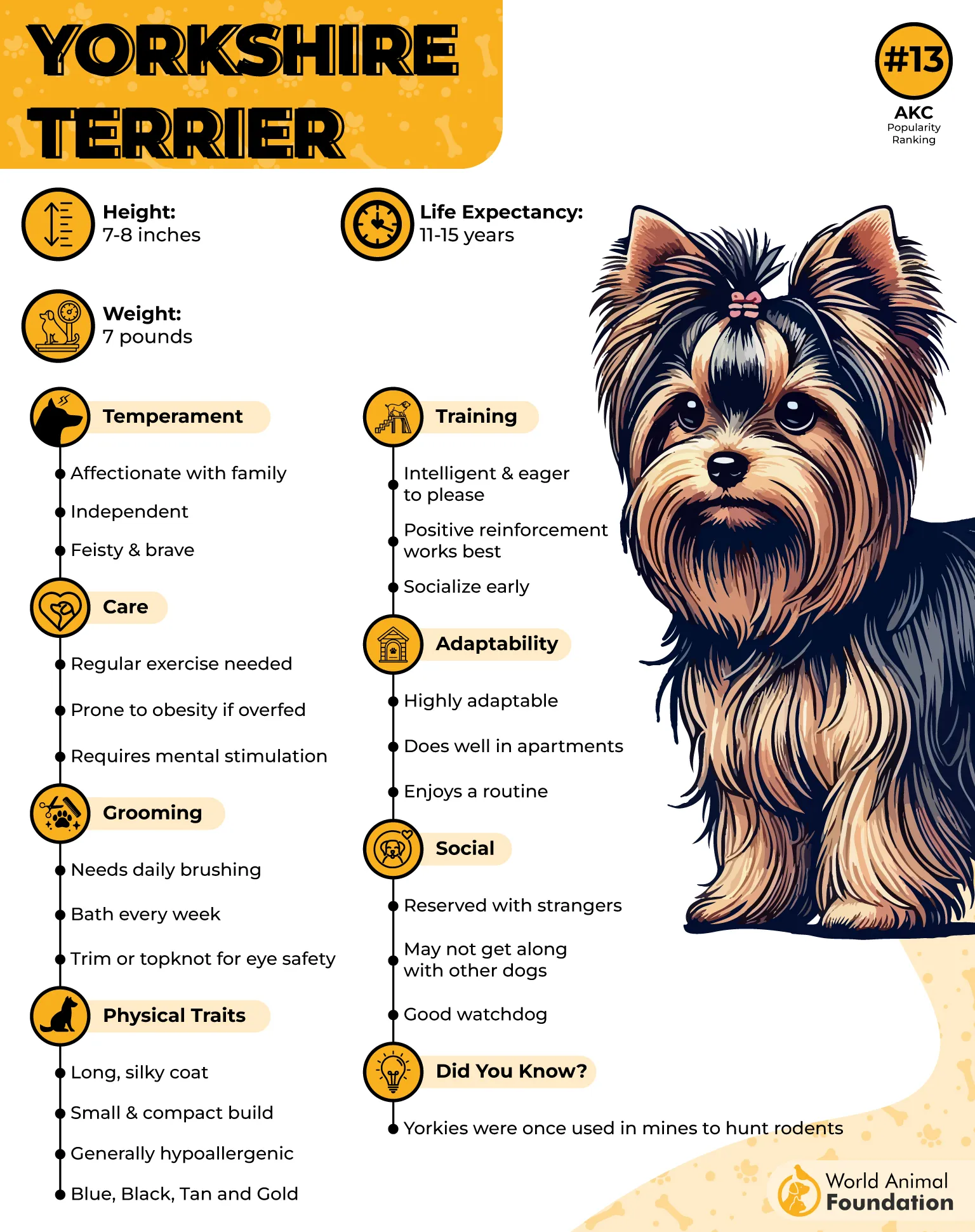
Sure, they may throw a little shade when another dog sniffs your shoe too long, but their protective streak comes from pure love. A Yorkie will have your back, even if that back is 20 times their size.
Fun Fact: Yorkies used to work in mines catching rats. Today, they work on catching hearts.
3. Shih Tzu
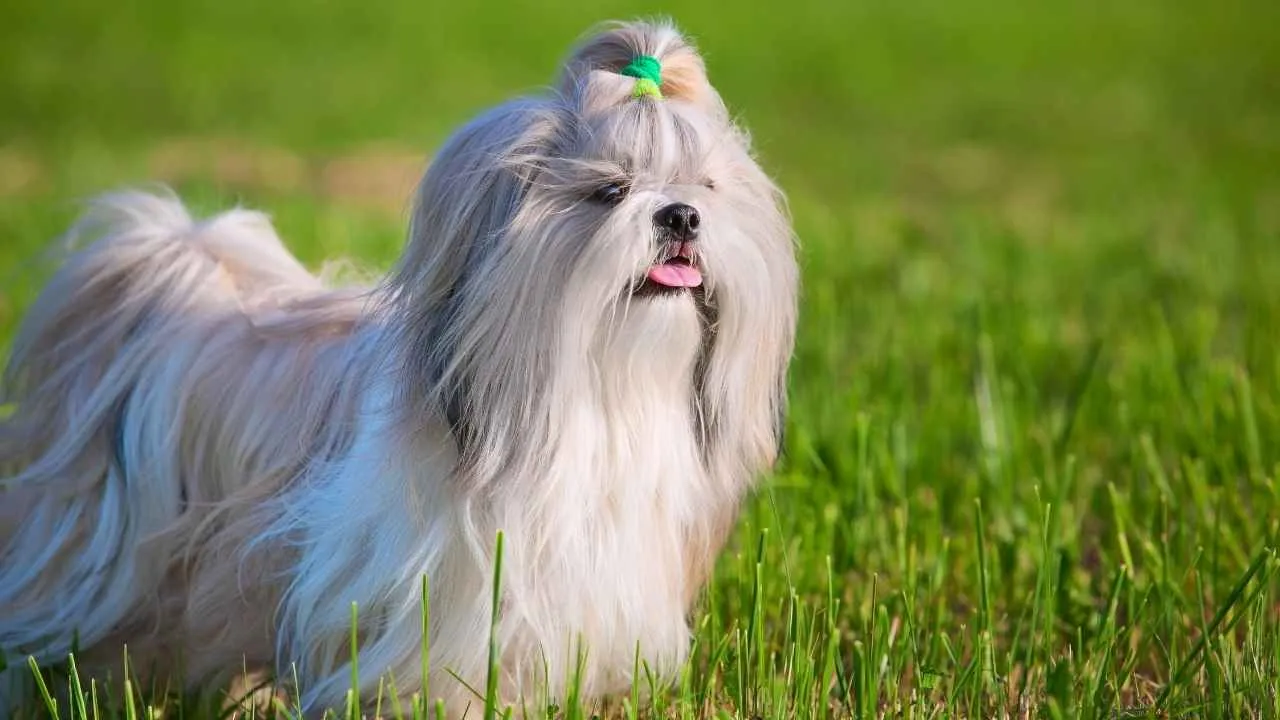
Shedding Level: Low. Considered hypoallergenic, but grooming is non-negotiable.
Good Service Dog Potential: Excellent for emotional and psychiatric support, especially in children or those with sensory/intellectual disabilities.
You know how some people just seem like they were born to be pampered? That’s the Shih Tzu—a dog breed that had emperors wrapped around their paws back in ancient China.
But don’t be fooled by the royal roots. Shih Tzus are more than living teddy bears—they’re loving, loyal, and full of spunk.
Their compact size makes them ideal for service dog tasks that don’t require heavy lifting—think psychiatric service dogs, anxiety alerts, tactile stimulation, or even simply emotional support that fits perfectly in your lap. These affectionate dogs are lapdogs with a license to help.
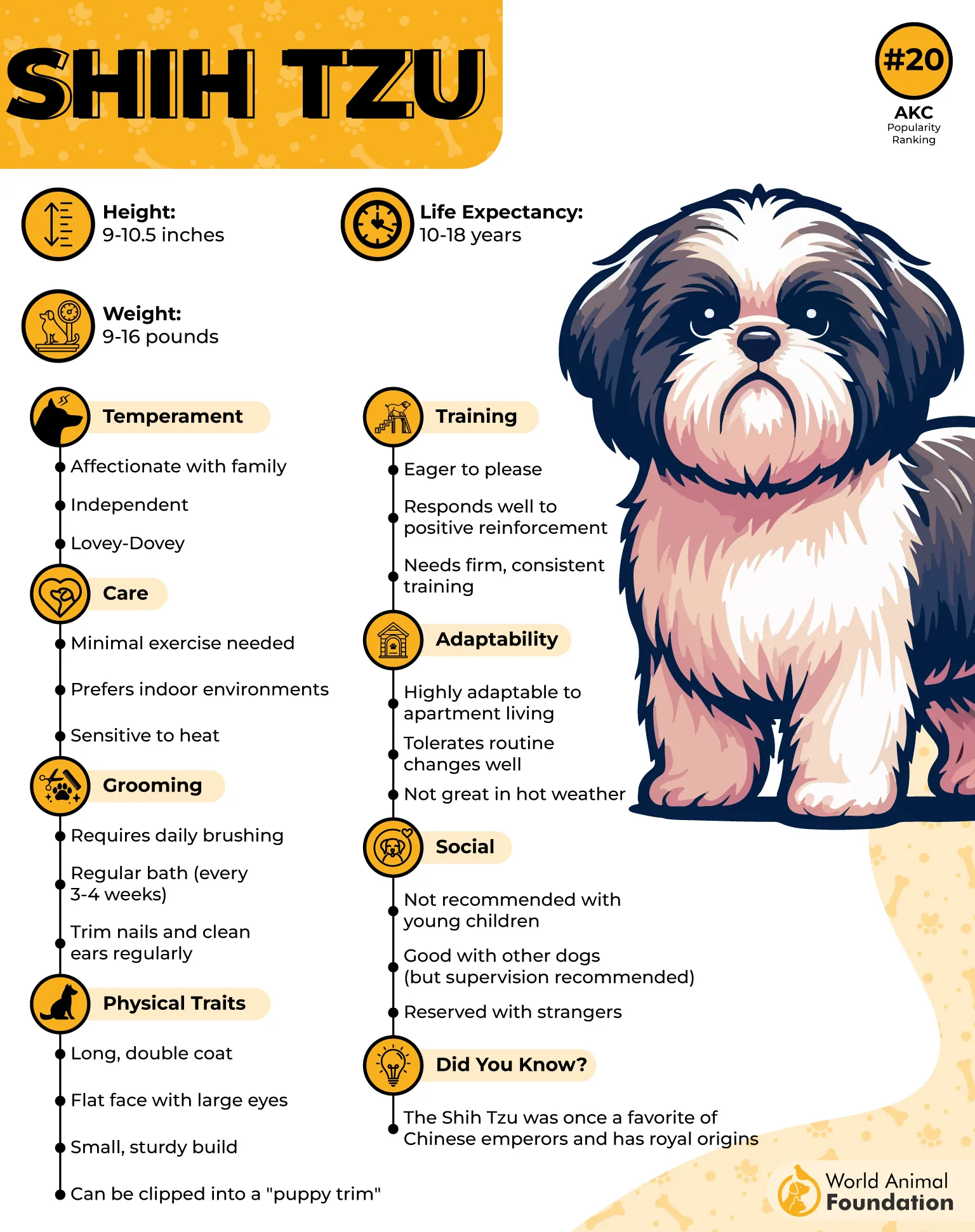
Sure, they’ve got a luxurious mane that could rival a shampoo commercial, but they shed very little. Just know: if you skip grooming, that flowing mane becomes a tangled jungle real quick.
Fun Fact: “Shih Tzu” means “little lion,” which is ironic because this dog would rather snuggle than roar.
4. Miniature Schnauzer
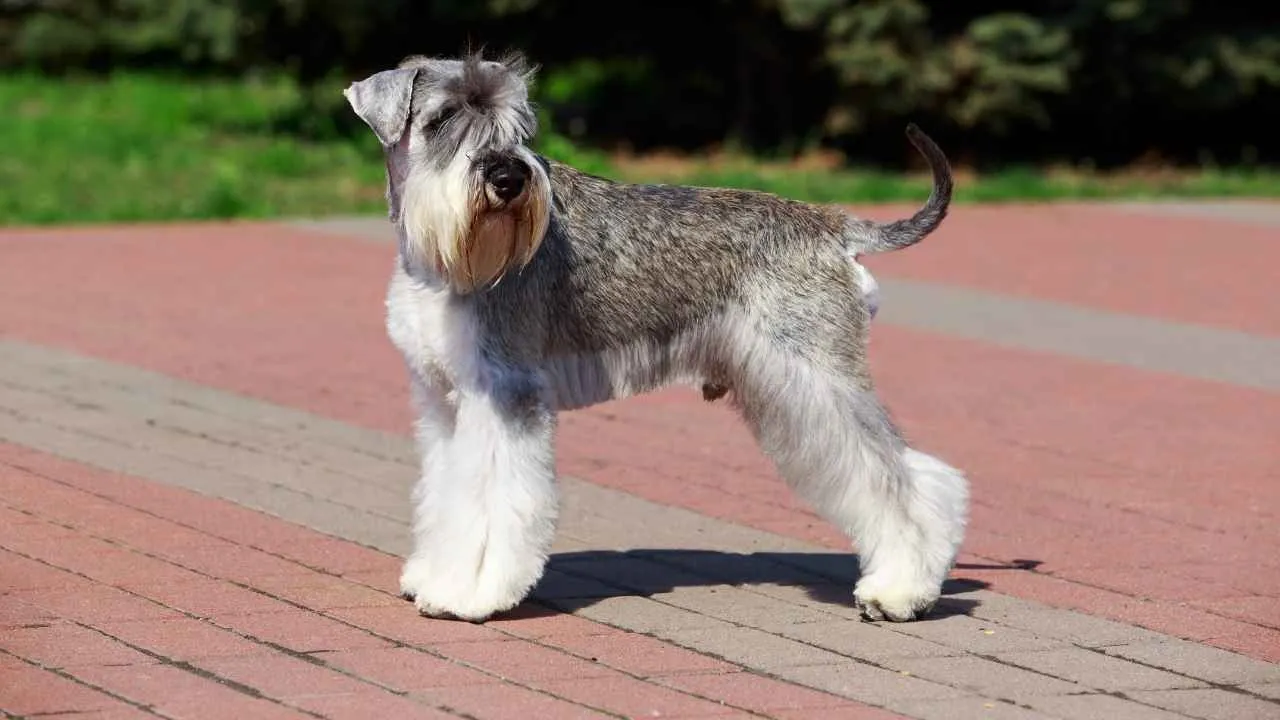
Shedding Level: Barely there. They’re practically allergic to shedding, but require regular grooming.
Service Dog Potential: Strong for hearing alert tasks, medical alert, or emotional support—especially in active homes.
If Sherlock Holmes were a dog, he’d probably be a Miniature Schnauzer—seriously, that beard just screams detective. They’re sharp, alert, and full of life, with a loyalty that rivals your clingiest friend.
These affectionate pups are great for service work that involves alerting, fetching small items, or providing comforting companionship. Plus, their alertness and intelligence make them excellent for tasks like seizure alerts, diabetic alerts, or psychiatric support.
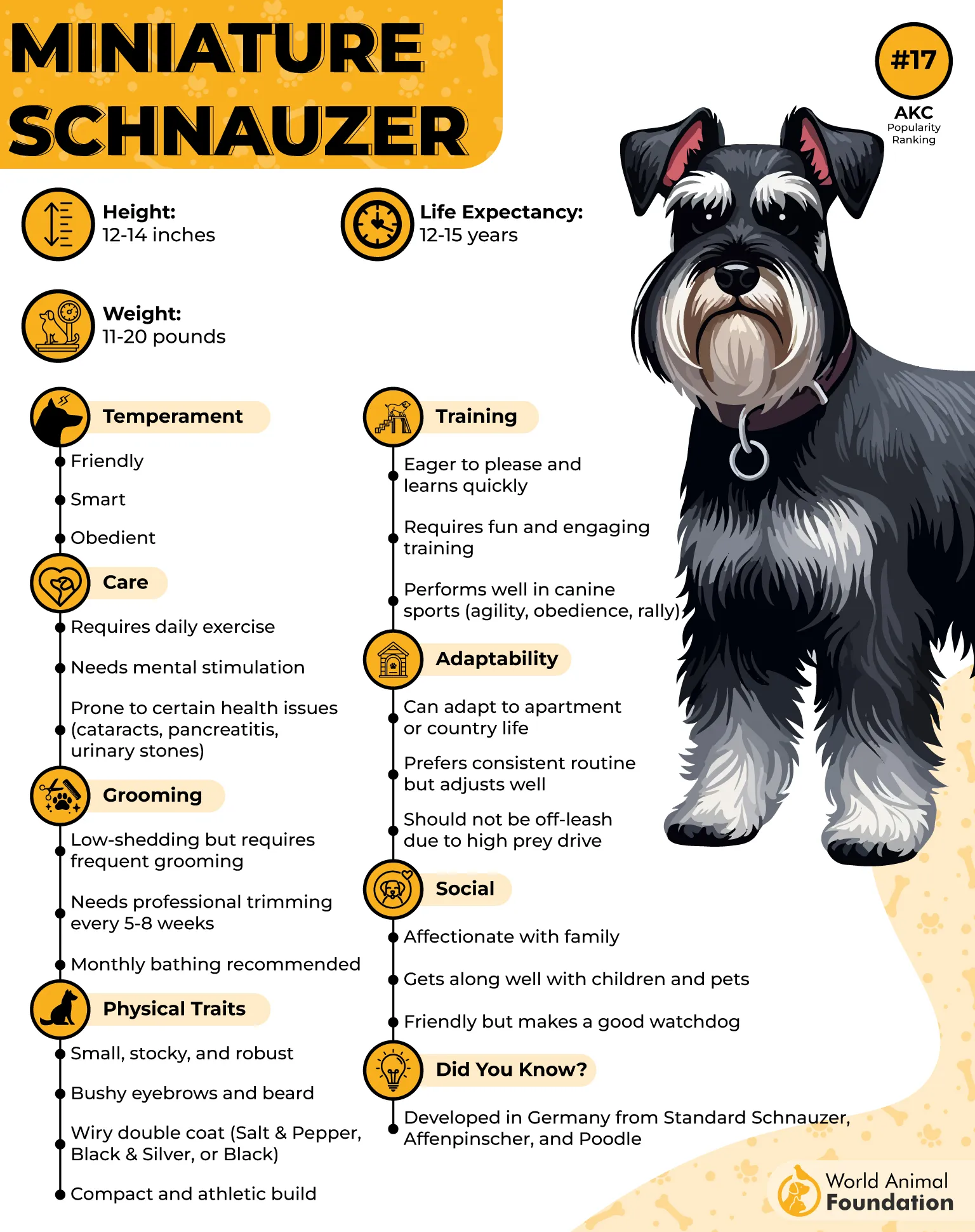
These small dogs shed so little, you’ll question if they’re part poodle. But remember: that iconic beard needs regular spa days unless you’re aiming for the “grumpy old man who forgot his comb” look.
Fun Fact: Schnauzers got their name from the German word “schnauze,” which means “snout” or “muzzle.” The name? All about the facial hair.
5. Standard Schnauzer
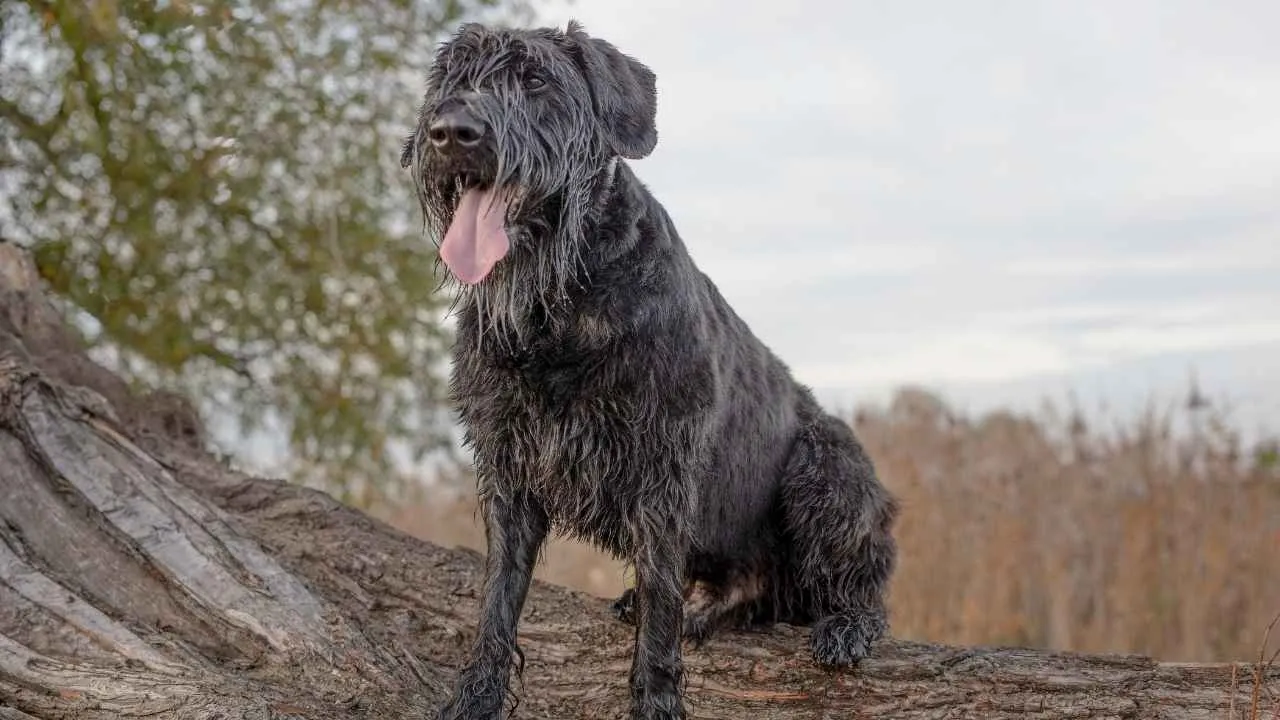
Shedding Level: Very low. Wiry coat with minimal odor—but grooming is a must.
Service Dog Potential: Ideal for more active service roles, such as mobility assistance (for moderate needs), therapy work, and even search & rescue.
Meet the middle child of the Schnauzer family—Standard Schnauzers are tough, tenacious, and surprisingly versatile. They’re the “working breed” that can do it all—therapy, emotional support, rescue, even moderate physical service tasks. Plus, with minimal shedding and a built-in mustache, what’s not to love?
PetMD notes that the Standard Schnauzer gained popularity in dog shows around 1900, originally known as Wire-Haired Pinschers.
They love to be on the move, so if your service needs include an active lifestyle (hiking, errands, or just chasing the mailman—kidding!), this is your dog. They’re smart, loyal, and love being around their humans… although training requires patience. Think of it like convincing a teenager to do chores: they’ll do it, but only if you ask nicely (and offer snacks).
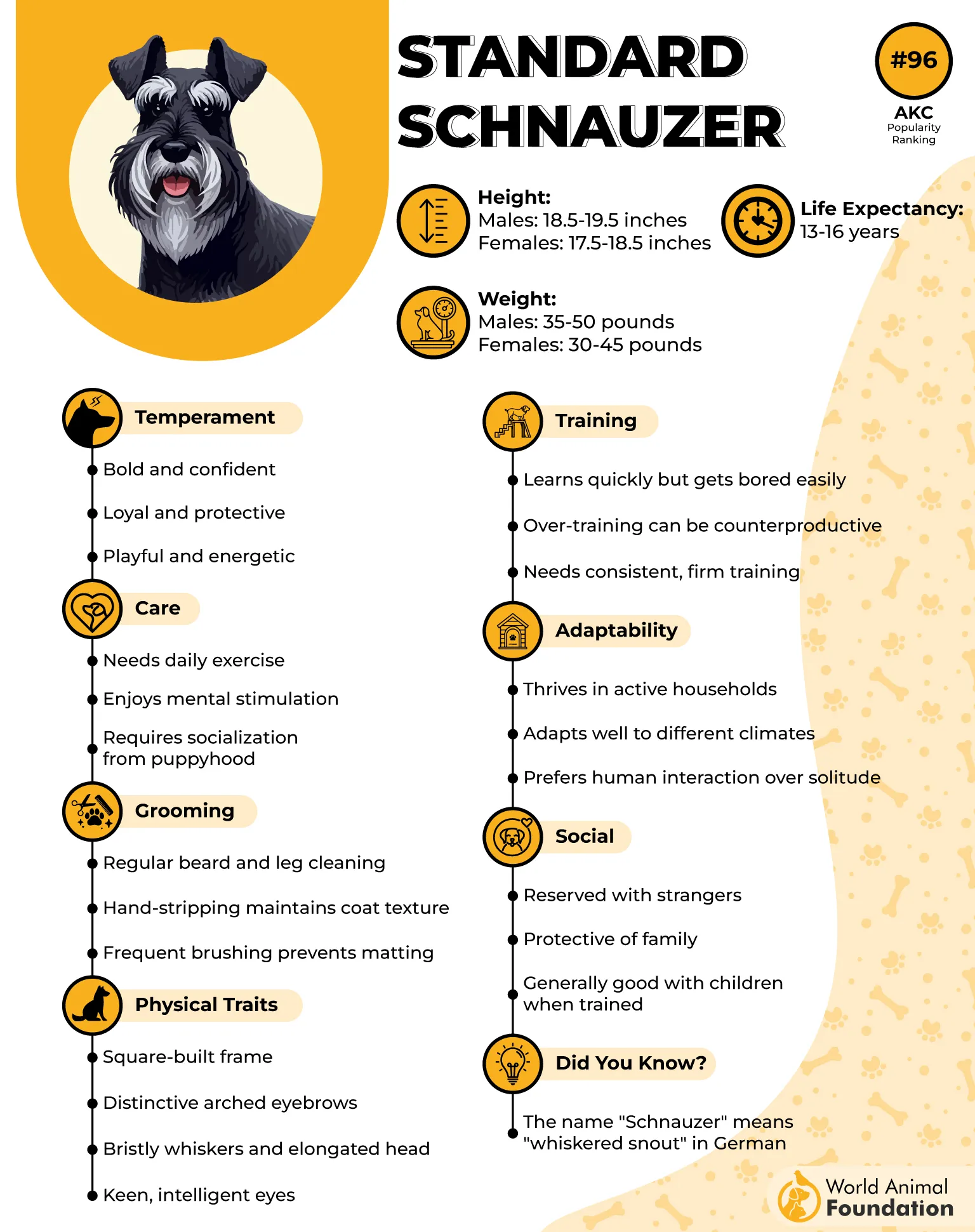
Despite their rough-and-tough exterior, these pups are loving, loyal, and great companions in both urban apartments or countryside cabins—just be sure they get their exercise in.
Fun Fact: These dogs were once used to guard carts of goods in medieval Europe. That’s right—your groceries are in very safe paws.
6. Giant Schnauzer
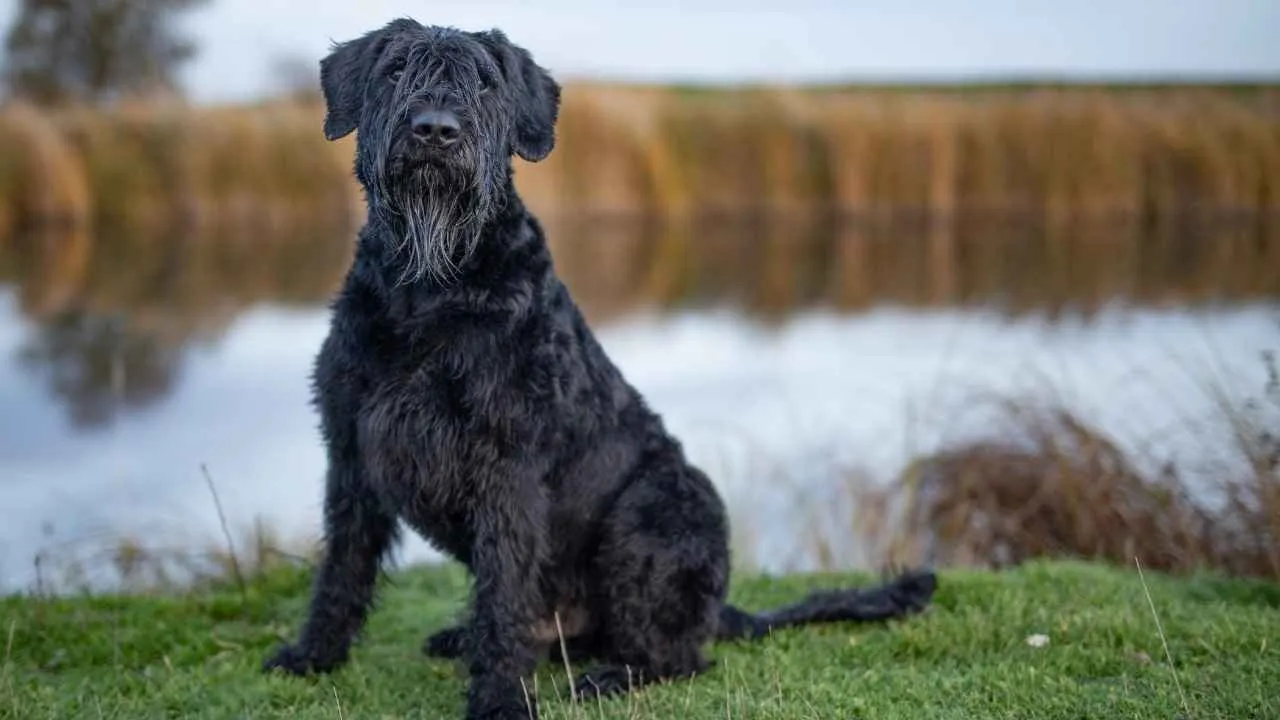
Shedding Level: Low. They have hair, not fur, which means minimal shedding, but they do need regular grooming.
Service Dog Potential: Excellent for mobility assistance, guiding tasks, and emotional security—if trained by experienced handlers.
Don’t let the “Giant” in Giant Schnauzer scare you off. Sure, they look like bouncers in a dog suit, but beneath that intense exterior lies a deeply loyal, protective, and intelligent partner.
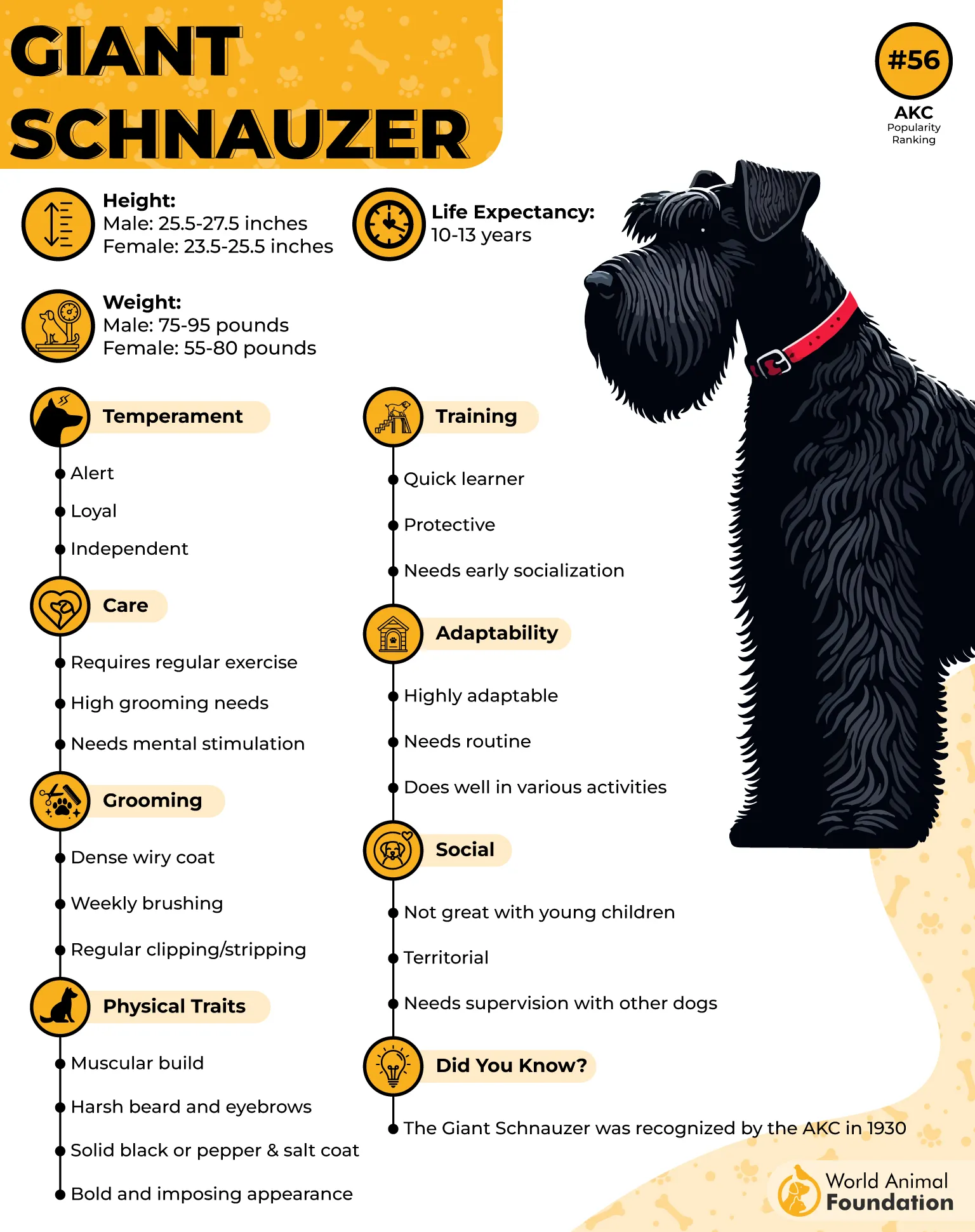
These dogs were bred to work, and they thrive with a job. Their size and strength make them ideal for mobility support, PTSD alert, and even visual guidance work. Plus, their imposing appearance brings a built-in sense of safety, perfect for those who benefit from a little extra confidence in public settings.
But here’s the catch: these are not beginner dogs. They’re independent thinkers with a stubborn streak, so training them as service animals can be a bit like arguing with a very clever toddler who just learned how to say “No.” Still, with the right structure, consistent training, and experienced handlers, they can be phenomenal service animals.
Bonus: Their double coat is more hair than fur, so if you hate vacuuming up tufts of fluff, they’ve got you covered—literally and figuratively.
Fun Fact: Giant Schnauzers once drove cattle through the Alps. Now, they just drive their humans to the fridge.
7. Bichon Frise
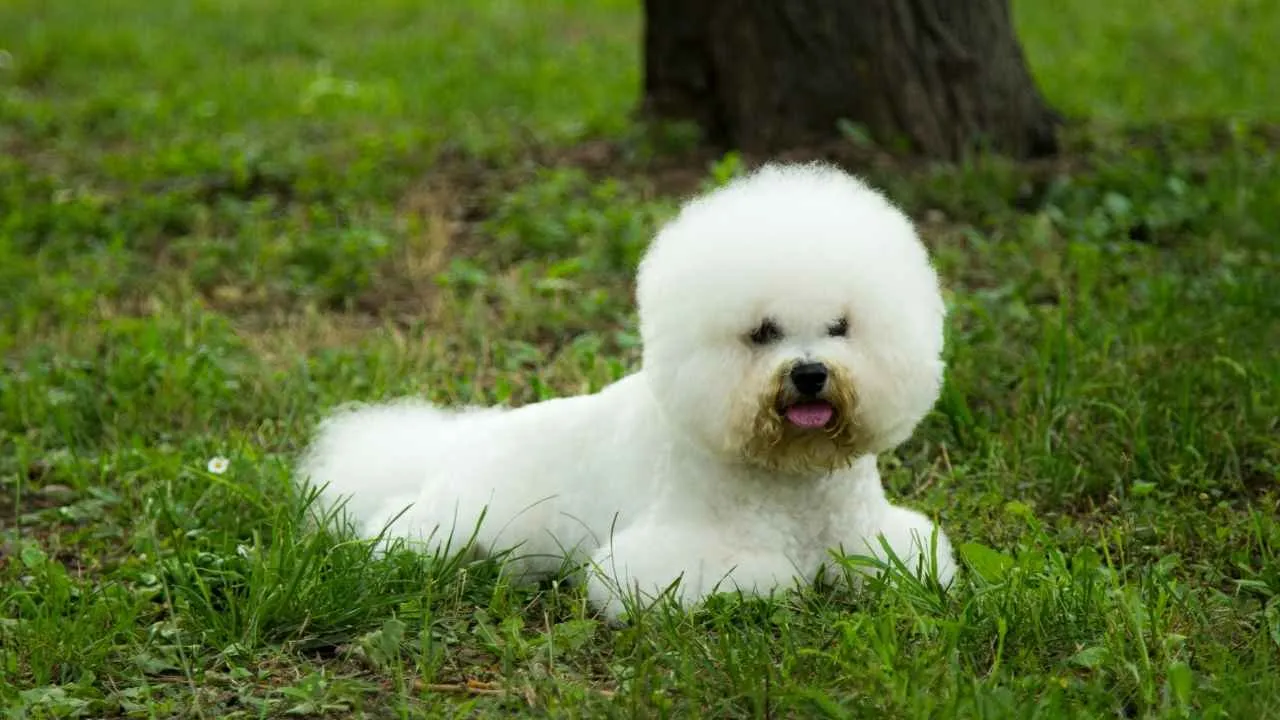
Shedding Level: Barely there. They’re often listed as one of the most hypoallergenic breeds.
Service Dog Potential: Top-tier emotional support and psychiatric service dog. Also shines in therapy settings.
Looking for a small dog that’s all fluff, no mess, and a heart big enough to carry your emotional baggage? Meet the Bichon Frise—a white teddy bear of joy that’s so cute it should be illegal.
These dogs are natural emotional support animals. Their intuitive nature allows them to pick up on emotional shifts, making them ideal for psychiatric service work, such as helping with anxiety, depression, or PTSD. Their sunny disposition is therapy in dog form.
They don’t just look hypoallergenic—they act like it, too. Purina says, Bichons are one of the best options for allergy sufferers, thanks to their curly, non-shedding coat. Just remember: grooming is a commitment. Without regular brushing and trims, your cloud-pup can turn into a cotton candy disaster.
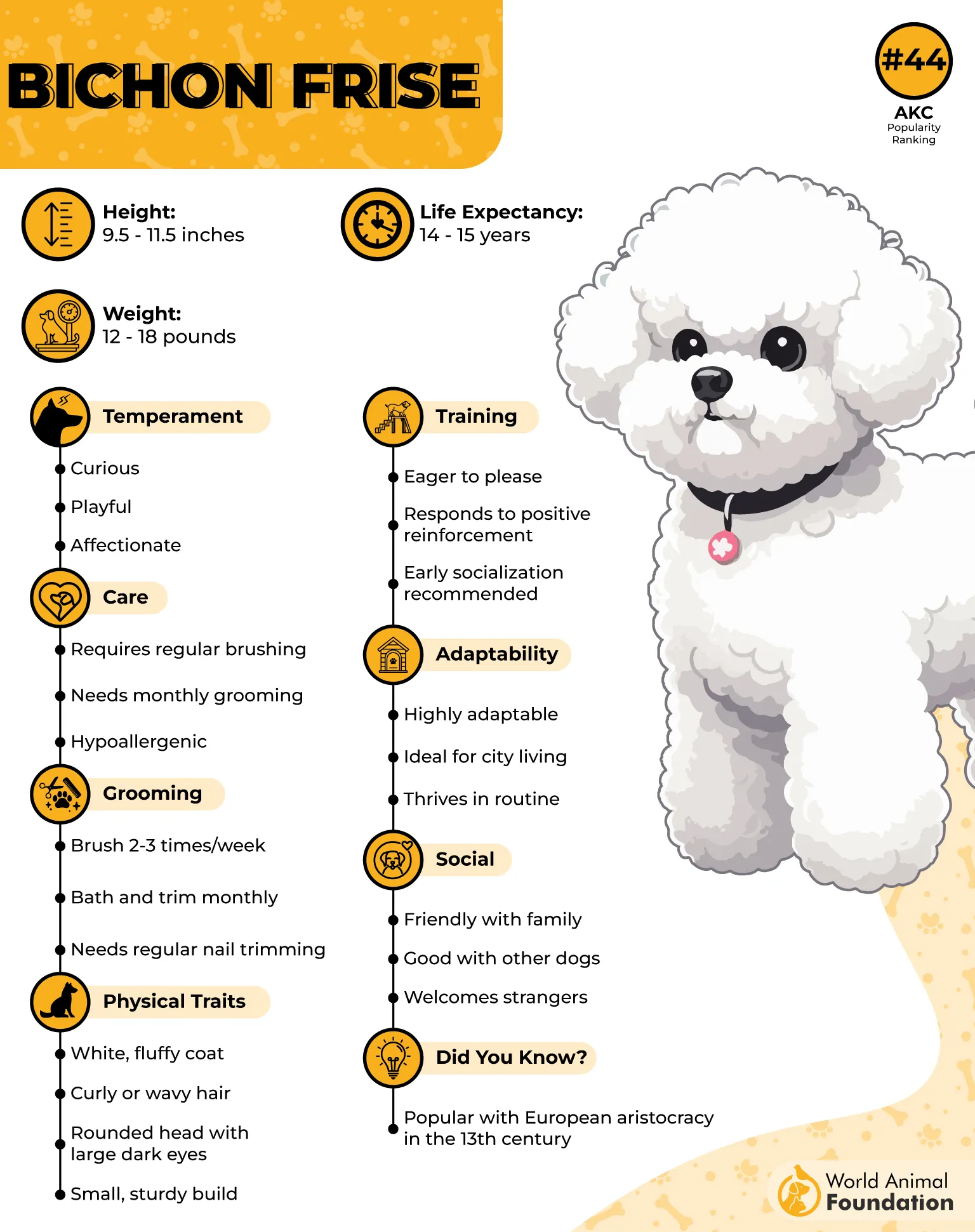
And yes, they’re small—but don’t let the size fool you. These pups have big personalities, love to play, and usually get along great with other dogs, kids, and even cats. Just maybe skip playdates with Saint Bernards.
Fun Fact: Bichons were once traded as royal gifts among European nobility, and they still haven’t forgotten it.
Conclusion
For people with dog allergies, finding a compatible companion who can perform tasks as a service dog while minimizing allergic reactions is a unique challenge. While there’s technically no such thing as completely hypoallergenic dogs, some specific breeds are known to produce fewer dog allergens, helping reduce the risk of a trigger allergic reaction. These hypoallergenic dog breeds—such as the Portuguese Water Dog, Irish Water Spaniel, Soft Coated Wheaten Terrier, Bedlington Terrier, and Chinese Crested—are often favored for their hypoallergenic nature and low-shedding coats.
Some small dogs with incredibly soft fur may also serve as effective service animals, particularly in cases where a smaller size is a benefit. Though Labrador Retrievers are among the most commonly used dogs for service, they are not ideal for people with dog allergies unless bred specifically as mixed breeds with hypoallergenic breeds.
Veterinary care and routine grooming are essential to managing dog allergies, even with the best hypoallergenic service dogs. By selecting other breeds that are low shedding and known for producing fewer allergy symptoms, allergy sufferers can still benefit from a highly capable service dog without compromising their health.


